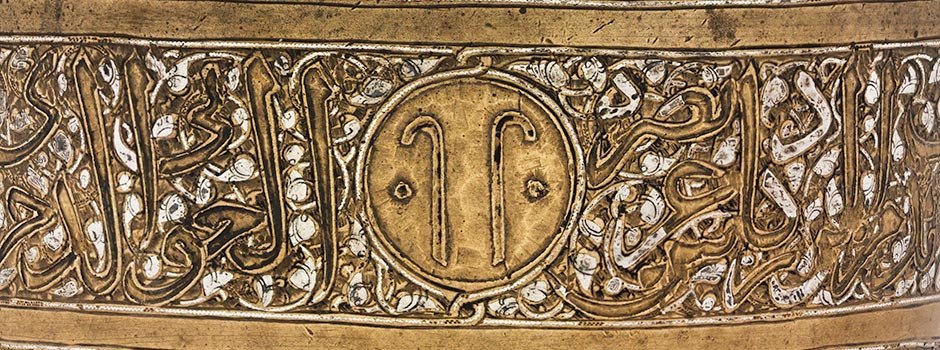
TREASURES FROM THE COLLECTION OF THE MUSEUM OF ISLAMIC ART The Hunt: Princely Pursuits in Islamic Lands
Sep 08, 2015 Art Collection

Drawing extensively on the Museum of Islamic Art collection and featuring loans from Qatari and Turkish museum collections, the exhibition includes artworks from the 11th to the 20th centuries, telling the story of hunting as a pursuit of kings and rulers during this period. The exhibition demonstrates the extraordinary skill and artistry of the craftsmen of the time, who used a wide range of intricate techniques and materials.
Quivers, bows, an archer’s ring set with precious stones, rifles, daggers, powder and hunting horns, swords, helmets, pomanders, falcon hoods, paintings of hunting scenes, and early photographs, are among the exhibited objects. The artworks come from locations including modern day Afghanistan, Egypt, India, Iran, Iraq, Pakistan, Uzbekistan, Italy, Syria and Turkey.
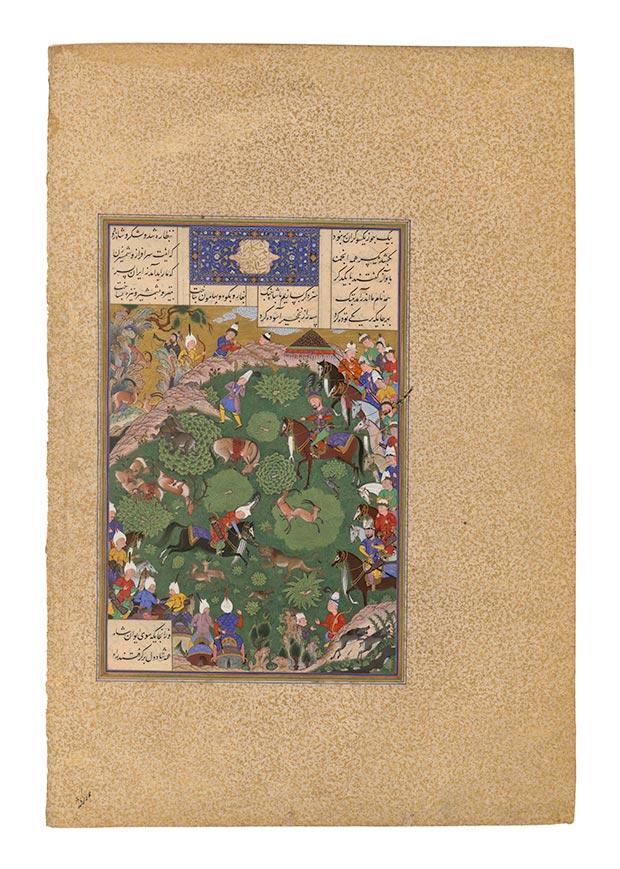 ‘Siyavush and Afrasiyab in the hunting field’, folio 182 of the Shahnameh of Shah Tahmasp, Attributed to Qasim bin Ali Safavid, Iran (Tabriz), c. 1525-1540 CE, Opaque watercolours, ink and gilt paint on paper H: 47.2 cm; W: 31.8 cm / Courtesy of MIA
‘Siyavush and Afrasiyab in the hunting field’, folio 182 of the Shahnameh of Shah Tahmasp, Attributed to Qasim bin Ali Safavid, Iran (Tabriz), c. 1525-1540 CE, Opaque watercolours, ink and gilt paint on paper H: 47.2 cm; W: 31.8 cm / Courtesy of MIA
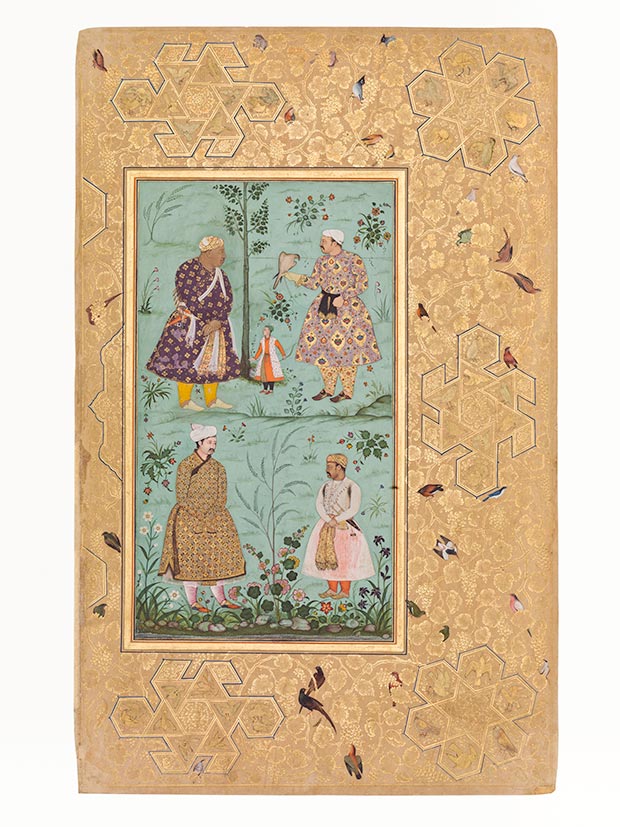 Portraits of Mughal courtiers Illuminated page from the Jahangir album Mughal, India c. 1600-1618 CE Opaque watercolours, ink and gilt paint on paper H: 42.5 cm; W: 26.5 cm (open) / Courtesy of MIA
Portraits of Mughal courtiers Illuminated page from the Jahangir album Mughal, India c. 1600-1618 CE Opaque watercolours, ink and gilt paint on paper H: 42.5 cm; W: 26.5 cm (open) / Courtesy of MIA
 Archer’s ring Mughal, India 19th century Gold, diamond, enamel H: 2 cm; Diam: 4.4 cm / Courtesy of MIA
Archer’s ring Mughal, India 19th century Gold, diamond, enamel H: 2 cm; Diam: 4.4 cm / Courtesy of MIA
.jpg) Bowl Base, Saljuq or Khwarezmid, Iran (Kashan), 12th century, Fritware, glaze, enamel, Diam: 13.5 cm / Courtesy of MIA
Bowl Base, Saljuq or Khwarezmid, Iran (Kashan), 12th century, Fritware, glaze, enamel, Diam: 13.5 cm / Courtesy of MIA
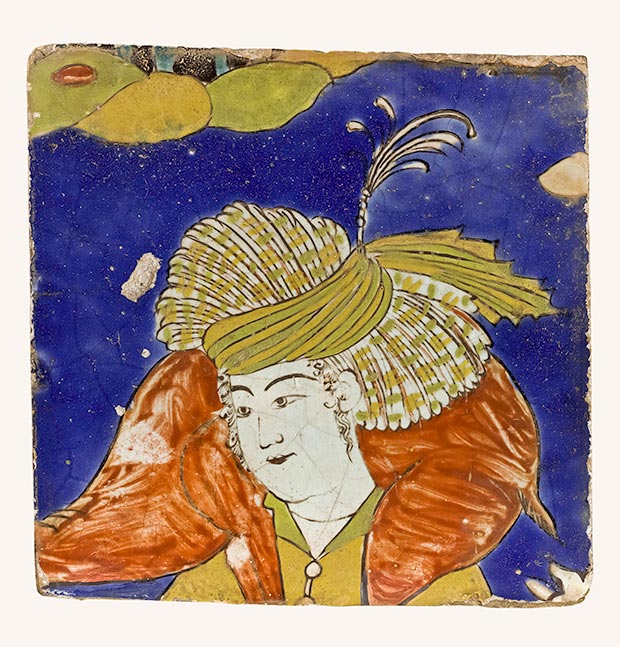 Tile with a Hunter Carrying a Dead Deer Safavid, Iran, 17th century, Glazed ceramic with cuerda seca technique, H: 23 cm; W: 23.4 cm / Courtesy of MIA
Tile with a Hunter Carrying a Dead Deer Safavid, Iran, 17th century, Glazed ceramic with cuerda seca technique, H: 23 cm; W: 23.4 cm / Courtesy of MIA
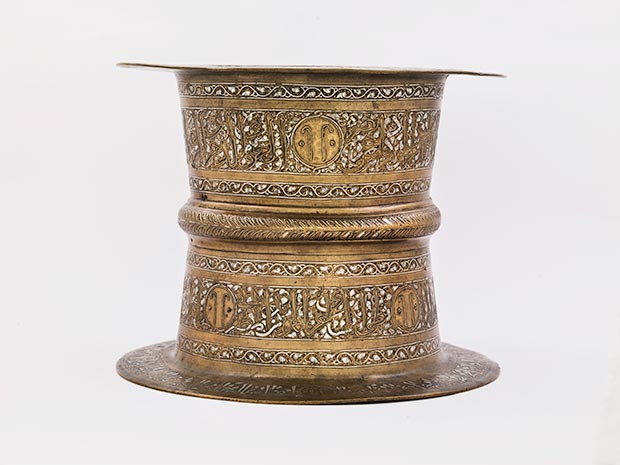 Tray Stand Mamluk, Egypt or Syria Late 13th century Bronze, silver H: 18.8 cm; Diam: 24.2 cm / Courtesy of MIA
Tray Stand Mamluk, Egypt or Syria Late 13th century Bronze, silver H: 18.8 cm; Diam: 24.2 cm / Courtesy of MIA
__Norman_Sicily_or_southern_Italy_Mid-12th_century.jpg) Oliphant (Hunting Horn), Norman Sicily or southern Italy, Mid-12th century, Carved and incised ivory, bronze, L: 53 cm; Diam: 9.8 cm (mouth) / 2.3 cm (base) / Courtesy of MIA
Oliphant (Hunting Horn), Norman Sicily or southern Italy, Mid-12th century, Carved and incised ivory, bronze, L: 53 cm; Diam: 9.8 cm (mouth) / 2.3 cm (base) / Courtesy of MIA
Founded in 2008, the Museum of Islamic Art (MIA) was first of the major museum to be developed by Qatar Museums. Designed by the great Chinese American architect, I M Pei, the MIA is a globally acclaimed museum showcasing Qatar’s world-class collections of Islamic art spanning 1,400 years to the present day. Representing the full scope of Islamic art, the MIA collection features manuscripts, ceramics, metal, glass, ivory, textiles, wood and precious stones. Collected from three continents—including countries across the Middle East and reaching as far as Spain and China—the Museum’s artworks represent the diversity of the Islamic world and date from the 7th through the 20th centuries. The museum stands majestically on a specially created cornice, with panoramic views across Doha’s waterfront. MIA also presents a changing programme of exhibitions, as well as extensive education activities for schools and community groups. The MIA has been a popular and critical success in the region and internationally, attracting over 200,000 visitors a year.
Comments
Add a comment